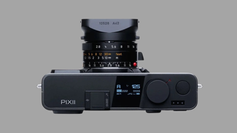Sony’s Triple-Layer Image Sensor
- The Magazine For Photographers

- Aug 1
- 1 min read

Sony recently gave investors a sneak peek into where its image sensor tech is headed, and it looks like we’re getting closer to a triple-layer stacked sensor. Right now, most high-end Sony sensors use a two-layer setup: one layer handles light capture (the photodiodes), and the second manages processing (the transistors). Adding a third layer could unlock processing power directly at the sensor level, which in turn would boost image quality, readout speed, and dynamic range.
The key idea is that more processing near the pixels allows the camera to work smarter and faster. That means less noise, better sensitivity, and potentially more video capabilities. It's not that this third layer adds more megapixels, but it helps squeeze more performance out of the pixels already there. Right now, many high-res sensors are bottlenecked by how fast they can read out data, which limits what they can do for video or burst shooting. A faster sensor means rolling shutter could be further reduced, autofocus could be quicker, and video modes might get serious upgrades.
Of course, there are physical tradeoffs to adding more layers, like reducing full-well capacity if you shrink pixels too much, but Sony seems to have found a workaround by separating and optimising each layer individually. There's no word yet on when this tech will show up in an Alpha or FX-series camera, but just the fact that Sony is working on something like this is already a win.
You can read full details on Sonyalpharumours’ website here










Comments